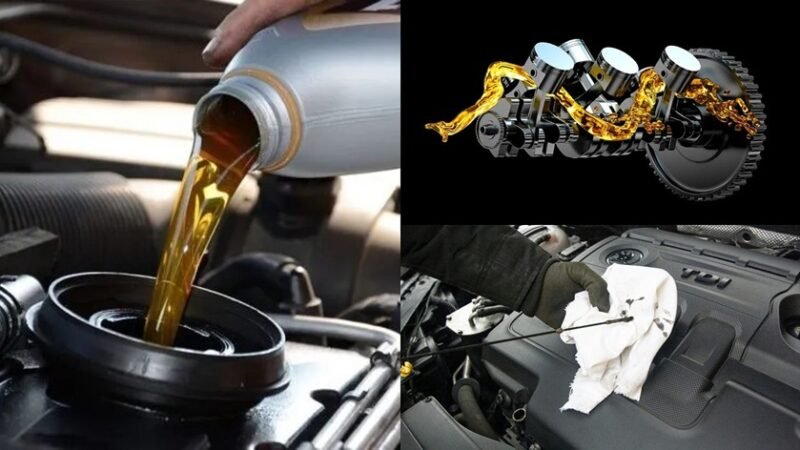Car Suspension Systems: Types, Maintenance, and Upgrades

A car’s suspension system is often an unsung hero, playing a crucial role in ensuring a smooth, stable ride and maintaining control over your vehicle. Whether you’re driving on a bumpy road or taking sharp turns, the suspension system is hard at work, absorbing shocks and keeping the tires firmly planted on the ground. In this article, we’ll dive deep into the different types of car suspension systems, how to maintain them, and what upgrades can enhance your vehicle’s performance.
What is a Car Suspension System?
A car suspension system is a collection of components that connect the vehicle’s body to its wheels. The primary purpose of Car Suspension Systems is to absorb and dampen the impacts of road irregularities, ensuring a comfortable ride and maintaining vehicle stability. It also helps in maximizing the contact between the tires and the road surface, which is essential for safe driving, especially during braking, accelerating, and cornering.
Types of Car Suspension Systems
There are several types of suspension systems used in vehicles, each with its own set of advantages and disadvantages. The choice of suspension system depends on the type of vehicle, its intended use, and the manufacturer’s design goals.
1. MacPherson Strut Suspension
Overview: The MacPherson strut suspension is one of the most common types found in modern cars, particularly in the front suspension of smaller vehicles. It combines a shock absorber and a coil spring into a single unit, making it a compact and cost-effective design.
Advantages:
- Compact Design: The MacPherson strut is space-efficient, making it ideal for smaller vehicles.
- Cost-Effective: It is relatively inexpensive to produce and repair.
- Lightweight: This design helps in reducing the overall weight of the vehicle, contributing to better fuel efficiency.
Disadvantages:
- Limited Performance: While adequate for everyday driving, the MacPherson strut may not offer the same level of performance as more sophisticated suspension systems, especially in high-performance vehicles.
- Less Comfortable: Compared to more complex systems, the ride comfort may be slightly compromised on rough roads.
2. Double Wishbone Suspension
Overview: The double wishbone suspension, also known as an A-arm suspension, uses two wishbone-shaped arms to connect the wheel to the vehicle’s chassis. This design is commonly used in sports cars and high-performance vehicles.
Advantages:
- Improved Handling: The double wishbone setup allows for better control over camber angles, resulting in superior handling and cornering performance.
- Enhanced Comfort: It provides a smoother ride by effectively absorbing shocks and minimizing vibrations.
Disadvantages:
- Complexity: The double wishbone suspension is more complex and requires more components, which can increase manufacturing and repair costs.
- Space Requirements: This system takes up more space, which can be a limitation in compact vehicles.
3. Multi-Link Suspension
Overview: The multi-link suspension system is a highly adaptable design that uses multiple arms and links to control the movement of the wheel. This type of suspension is often found in luxury cars and some high-performance models.
Advantages:
- Exceptional Ride Quality: Multi-link suspensions provide excellent comfort by isolating the vehicle’s body from road imperfections.
- Superior Handling: The system offers precise control over wheel movement, enhancing stability and handling, especially during aggressive driving.
Disadvantages:
- High Cost: The complexity of the multi-link suspension makes it expensive to produce and maintain.
- Maintenance Challenges: With more components, there are more potential points of failure, leading to higher maintenance requirements.
4. Air Suspension
Overview: Air suspension systems replace traditional coil springs with air-filled bags or bellows. These systems are often used in luxury vehicles, trucks, and buses, providing an adjustable ride height and customizable ride quality.
Advantages:
- Adjustable Ride Height: Drivers can adjust the ride height based on the driving conditions, improving comfort and performance.
- Enhanced Comfort: Air suspension systems offer a plush ride, absorbing even the most minor road imperfections.
Disadvantages:
- Expensive: Air suspension systems are costly to install and maintain.
- Reliability Issues: Over time, airbags can develop leaks, leading to system failures that require expensive repairs.
5. Leaf Spring Suspension
Overview: Leaf springs are one of the oldest suspension systems, typically used in trucks and heavy-duty vehicles. They consist of multiple layers of metal strips, or “leaves,” stacked on top of each other.
Advantages:
- Durability: Leaf springs are incredibly robust and can handle heavy loads, making them ideal for trucks and commercial vehicles.
- Simplicity: The design is simple and reliable, requiring minimal maintenance.
Disadvantages:
- Rough Ride: Leaf springs offer less comfort compared to modern suspension systems, leading to a harsher ride.
- Limited Adjustability: The fixed nature of leaf springs means they don’t offer the same level of adjustability or performance tuning as other systems.
Maintaining Your Car Suspension System
Proper maintenance of your suspension system is essential for ensuring a safe and comfortable ride. Here are some tips to keep your suspension system in top condition:
1. Regular Inspections
- Visual Checks: Regularly inspect your suspension components for signs of wear, damage, or leaks. Look for cracks, rust, or broken parts.
- Listen for Noises: Unusual noises like clunking, squeaking, or rattling when driving over bumps can indicate suspension problems.
2. Check the Alignment
- Wheel Alignment: Misaligned wheels can cause uneven tire wear and strain on suspension components. Have your alignment checked and corrected periodically.
- Steering Response: If your car pulls to one side or the steering feels loose, it may be time to check the alignment.
3. Monitor Tire Condition
- Tire Wear: Uneven tire wear can be a sign of suspension issues. Ensure your tires are balanced and rotated regularly to promote even wear.
- Tire Pressure: Keep your tires properly inflated, as low tire pressure can affect the suspension’s performance and lead to premature wear.
4. Replace Worn Components
- Shock Absorbers and Struts: Over time, shock absorbers and struts wear out, leading to a bouncy or uncomfortable ride. Replace them as needed to maintain optimal suspension performance.
- Bushings and Bearings: Suspension bushings and bearings can wear out over time, causing excessive play and reducing ride quality. Regularly check and replace these components as necessary.
5. Avoid Overloading
- Load Limits: Avoid exceeding your vehicle’s load capacity, as overloading can strain the suspension and lead to premature failure.
- Balanced Load: Ensure that your vehicle’s load is evenly distributed to prevent uneven stress on the suspension.
Upgrading Your Suspension System
If you’re looking to enhance your Vehicle’s Performance, comfort, or appearance, upgrading your suspension system can be an excellent option. Here are some popular suspension upgrades:
1. Performance Shocks and Struts
- Improved Handling: Upgrading to performance shocks and struts can enhance your vehicle’s handling, reducing body roll and improving cornering stability.
- Better Ride Quality: High-quality shocks can also provide a smoother ride, even on rough roads.
2. Lowering Springs
- Enhanced Appearance: Lowering springs can give your car a more aggressive stance, improving its overall appearance.
- Improved Performance: Lowering your vehicle’s center of gravity can enhance handling and stability, especially during high-speed driving.
3. Coilover Suspension
- Adjustability: Coilover suspension systems offer adjustable ride height and damping settings, allowing you to fine-tune your vehicle’s performance and comfort.
- Track-Ready Performance: Coilovers are popular among performance enthusiasts for their ability to provide a track-ready setup for spirited driving.
4. Upgraded Sway Bars
- Reduced Body Roll: Thicker sway bars can reduce body roll during cornering, improving your vehicle’s stability and handling.
- Enhanced Control: Upgraded sway bars provide a more precise steering response, making your car more responsive in turn.
5. Air Suspension Kits
- Customizable Ride Height: Air suspension kits allow you to adjust your vehicle’s ride height at the touch of a button, providing both performance and comfort benefits.
- Luxury Ride Quality: For those seeking a plush, comfortable ride, air suspension offers unparalleled smoothness and adjustability.
Conclusion
Understanding your car’s suspension system is key to maintaining a smooth, comfortable ride and ensuring your vehicle’s safety. Whether you’re content with your current setup or looking to make upgrades, knowing the types, maintenance practices, and potential enhancements can help you get the most out of your Car Suspension Systems. By keeping your suspension in top condition and considering performance upgrades when needed, you’ll enjoy a more enjoyable and reliable driving experience.





